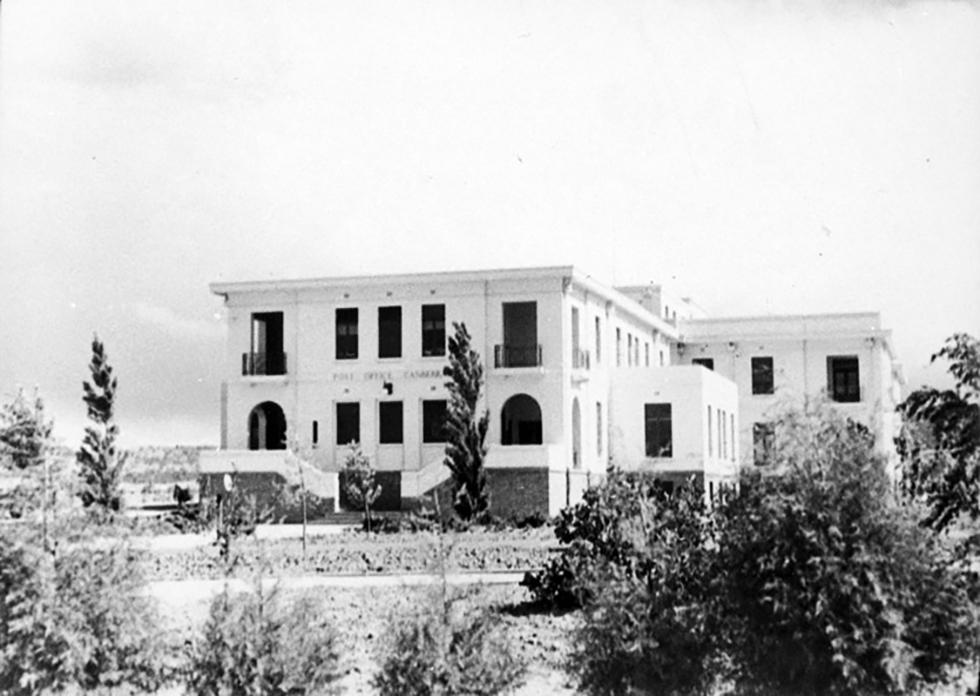


About this record
This black-and-white photograph shows East Block, also known as Secretariat Building No. 1, one of only two office buildings constructed for Commonwealth public servants and ministerial staff when Canberra was first built. The building is seen from the north-west, with the stairways leading to the Canberra Post Office visible in front of it. The image forms part of a set of lantern slides of scenes in Canberra put together by the Federal Capital Commission, and was almost certainly taken by government photographer William James 'Jack' Mildenhall.
Educational value
- This building embodies 1920s thinking about the size and purpose of Australia's national capital. At the time it was thought that Canberra would be a relatively small city, with a permanent year-round population largely devoted to servicing the needs of federal parliament. Apart from full-time residents, government ministers would be there most often and their staff would need office accommodation – hence the need for this building and Secretariat Building No. 2 (West Block).The building was ready for occupation in 1926.
- East Block is situated in one of the most significant areas of Canberra, the Parliamentary Triangle. It is one of the three original buildings–the others are the interim (Old) Parliament House and the West Block building – that made up the parliamentary precinct in the 1920s and 30s. The names East Block and West Block came about because the buildings are to the east and west of Old Parliament House.
- From 1927 the original Canberra Post Office operated from the wing of the building facing Queen Victoria Terrace (seen here) and became the point from which distances to and from Canberra were measured. It was designed by John Smith Murdoch (1862–1945) in the stripped classical architectural style. Murdoch, the government architect, used this style for all three original buildings in the Parliamentary Triangle.
- Landscaping the parliamentary precinct was given particular attention in the 1920s, and some of the plantings around East Block can be seen here. The landscape plans for Parliament House – drawn up by Superintendent of Parks and Gardens Charles Weston (1866–1935), Murdoch and others – called for formal lawns, recreational areas and gardens with cypress hedging to cover more than 50 hectares, and to flow out towards matching exotic plantings around East and West blocks.
- With the decision that the Commonwealth public service would progressively be transferred from Melbourne, East Block became the home of public servants rather than ministerial staff members. Over the years the Department of Commerce, Department of Trade and Customs, Auditor-General's Office, Australian Security Intelligence Organisation (ASIO) and Prime Minister's Department as well as the General Post Office have been housed here. The National Archives of Australia took over the entire building in 1998.
- To William James 'Jack' Mildenhall (1891–1962) Australia owes almost all of its visual record of the establishment and development of early Canberra, an example of which is seen here. Working in Canberra as a paymaster in the Commonwealth Department of Works and Railways, Mildenhall was an enthusiastic amateur photographer and he offered his services as the 'official' photographer of the national capital. In 1926 he became Information Officer for the Federal Capital Commission.
Acknowledgments
Learning resource text © Education Services Australia Limited and the National Archives of Australia 2010.
Related themes
Need help with your research?
Learn how to interpret primary sources, use our collection and more.


